The advisors were in agreement with Lord Asoka's gut feeling. Justinian's offer was a good one. The Byzantine emissary, bedecked with fine robes and precious metals, was called back into the simple, yet tasteful, Indian throne room. "Inform your lord Justinian that we will, indeed, exchange our metallurgical knowledge for your secrets of drawing sounds and taming the beasts of the field":
With this, the life-giving Cows roaming free through the streets of Delhi were finally herded into what is now known as "The Cattle District." Their rich milk was shipped throughout the empire, lessening malnutrition in the mosquito-infested Babylonian Flood Plains.
An Arab trader from Medina, one Yusif Gamal, was ambushed by bandits outside of Tehran. They killed his guards and took everything from him: goods, camels, even his personal store of food and drink. Badly beaten, starving, and utterly destitute, the merchant headed into Tehran, begging for scraps of food. The townsfolk took him in, bathed his tired legs, and provided him with fresh clothes, good food, and an armed retinue to escort him back to his own lands. Gamal was so impressed by the generosity he sold off what remained of his fortune and became a Hindu mystic. He returned, years later, to Tehran, where he shared his faith with those who had awakened it:
Lord Asoka rejoiced at the news of Hinduism spreading within his borders. He immediately visited Tehran, met with old Yusif Gamal, and publicly converted to the new faith.
In 1000 B.C., the tide of Nationless Ones seeking plunder in civilized lands reached a crisis point:
Delhi was protected by experienced soldiers trained in the arts of war. The western colonies, though, were garrisoned by mere honor guards equipped with outdated weaponry. This began a dark period for Babylon and Tehran, as Farms and Villages were left abandoned and those who were not busy forging crude Axes were given them to fend off the hordes with little or no real training.
The Nationless Ones' assault on India proper was more subtle. They snuck into Delhi, getting jobs on Farms and hanging around the Granary. They spread lies and fear among the good Indian people. They exaggerated the reports of the skirmishers in the west and told stories of a massive army coming east to crush all in its path. The intruders decried Asoka as a weak leader who would let the city fall into ruin. Predictably, the hysteria reached a fever pitch:
The Delhi garrison was overwhelmed by rioters who torched the countryside and burned the Granary before melting away into the wilderness. In those early years, this was a devastating blow. Workers rushed back from Mesopotamia to rebuild.
As Indian officials struggled to restore order in Delhi, the Barbarians boiled forth from their hidden city, eager to claim a larger prize than the few barrels of grain that the instigators had stolen away with:
Able to finally identify a military target, Asoka's Axemen swooped down to crush the attempted invasion. The city was saved, but it had been crippled from the riots. Such a disaster could not be allowed to happen again. The Barbarian city would have to fall.
These were hard times, but they were also times of growth. Despite the widespread destruction, the people of Delhi were able to equip a band of adventurous spirits who wanted to start over somewhere new. These hardy souls founded Persepolis, laying claim to the Persian Plateau:
Persepolis was an arid place, prone to Barbarian attack, and so those first years were hard, but there were Sheep and Deer to eat, and Hills and Iron to provide building materials. Once a Monument was built, the people began to gain confidence and the city became productive.
With Farms burning, Settlers expanding, and Axemen being pressed into service, science and the arts languished during these years. Were it not for alternative forms of research, nothing might have been learned. First, the good people of Tehran continued to show their generosity:
And Charlemagne taught India those tips and tricks that the rest of the world had mastered millenia ago:
The advisors were not consulted in this matter. These were basic technologies, yes, but scientific research stood essentially at a standstill. Unhappiness at overcrowding and regrettable incidents of slavery wracked the empire, and Ivory trinkets claimed from Indian Elephants could alleviate that. Massive Stone deposits outside Tehran lay exposed to the sun, unquarried. And the Indian people could not eye the oceans in fear forever. Eventually, the bounties of the seas would need to be harvested. Lord Asoka also wished to strengthen the bonds between the Indian and Holy Roman peoples. With Justinian converting to Buddhism, Asoka needed an ally on the European continent.
As most of the empire focused on rebuilding, a pair of Axeman detachments ventured into the southern Jungles to exact revenge on the Nationless Ones. They found themselves confronted by a pair of Archers garrisoning the Barbarian city, as well as another few roaming the surrounding lands. Attack would be hopeless without reinforcements. But, in taking out the Jungle Marauders, one of Asoka's Axemen found himself exposed. In a wild stroke of luck, one of the Garrison Archers left the city to make the kill. The other detachment, after doing some quick field exercises in City Raiding, swooped in on the now underdefended bandit camp:

Had the city of Gaul flown a flag and had a leader willing to negotiate a settlement, Lord Asoka would have sent out diplomats in a heartbeat. This, though, was a nest of common criminals. Officially, the camp was dispersed and the ringleaders were arrested. In fact, the place was locked up and burned to the ground, with noncombatants still inside. Lord Asoka hid his face in shame and spent two weeks in uninterrupted meditation to show penance to the gods.
The elimination of the bandit camp, though, allowed for the construction of the city of Vishakhapatnam, The City of Destiny:
Shortly thereafter, Indian artists rejoiced, for new avenues of Aesthetics had been discovered after centuries of experimentation. Scientists, too, were pleased, for this breakthrough could be traded for valuable Technologies on the open market. And it was at this crucial juncture that he once again turned to his advisors.
Here's a look at the empire as it is currently constituted:
Saladin and Justinian encroach on our borders to the west, and China and the Khmer threaten from the east. The north remains open, but full of Nationless Ones intent on slaughter.
Here is the Tech situation at this time:
Suryavarman presently offers the best deal, offering Alphabet and one other Tech in exchange for Iron Working and Aesthetics. The other Civs are, of course, willing to offer a handful of trash for Aesthetics.
And the Diplomacy Web:
As you can see, things are starting to break along religious lines. Which is to be expected.
So what now? I think the Statue of Zeus is worth pursuing. What should our next Tech goal be? Should we take Sury's trade? Should we spread Aesthetics to anyone else? Is my pace of expansion too fast or too slow? Anything else I'm missing?
Here's the save:



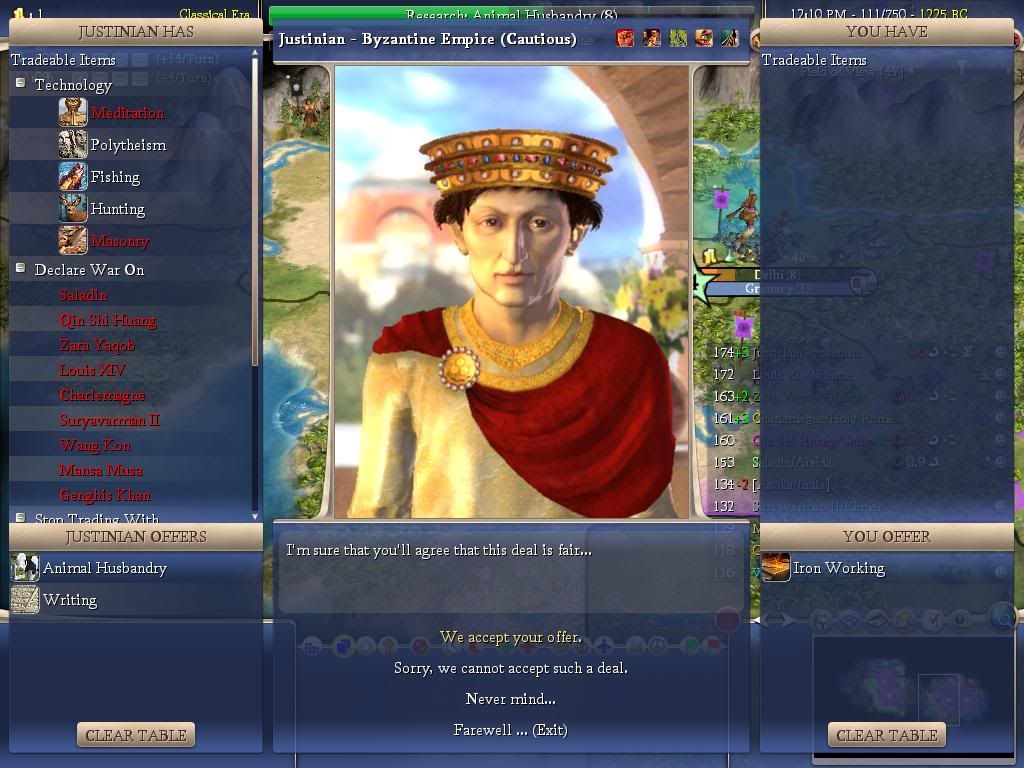
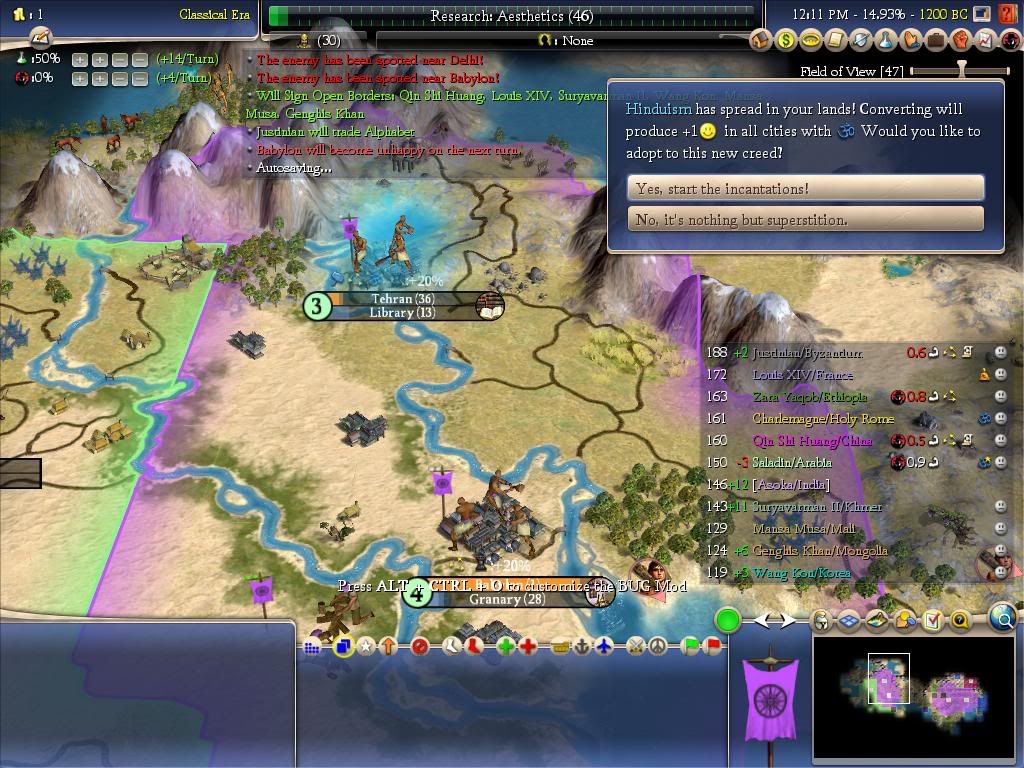
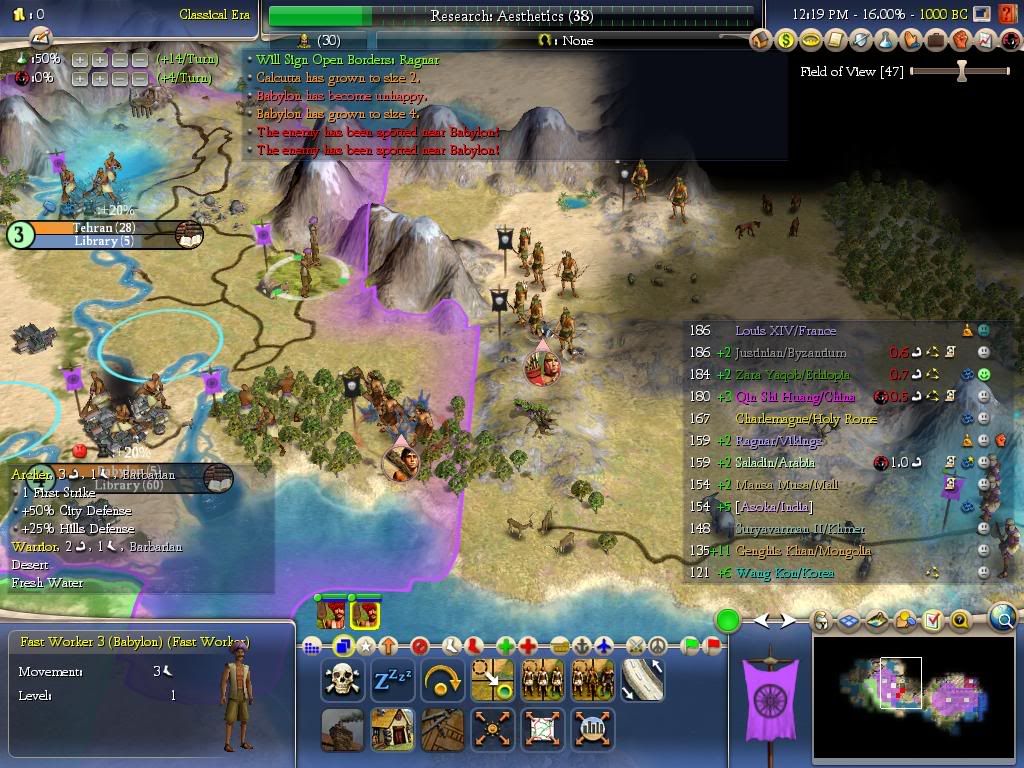

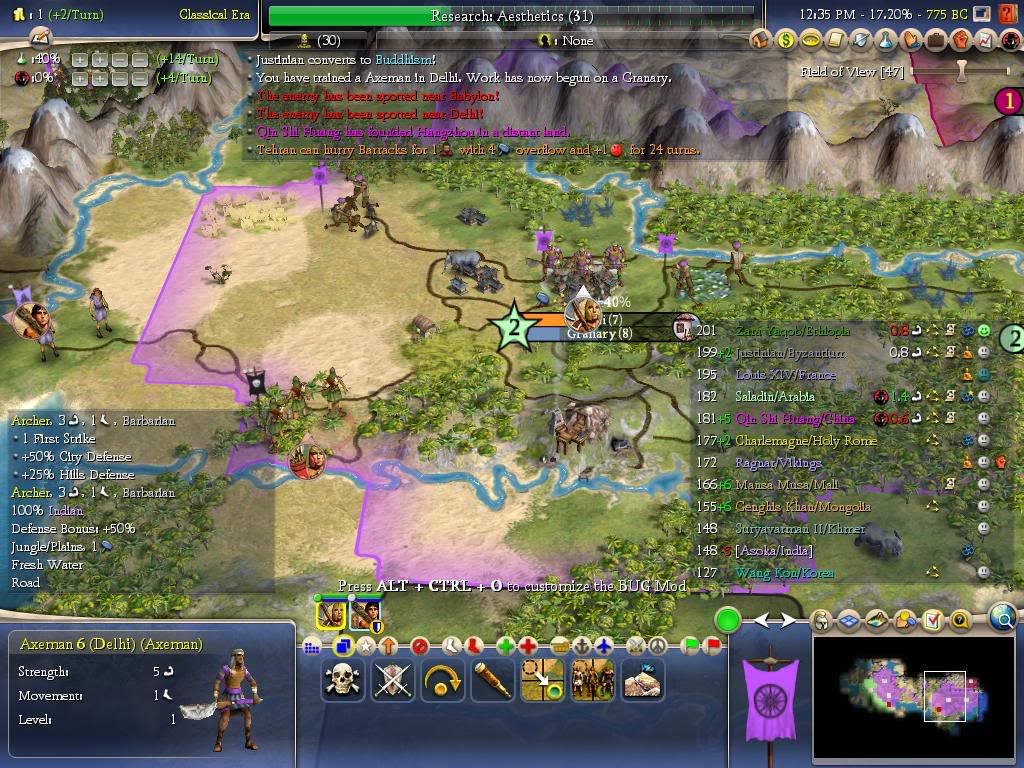
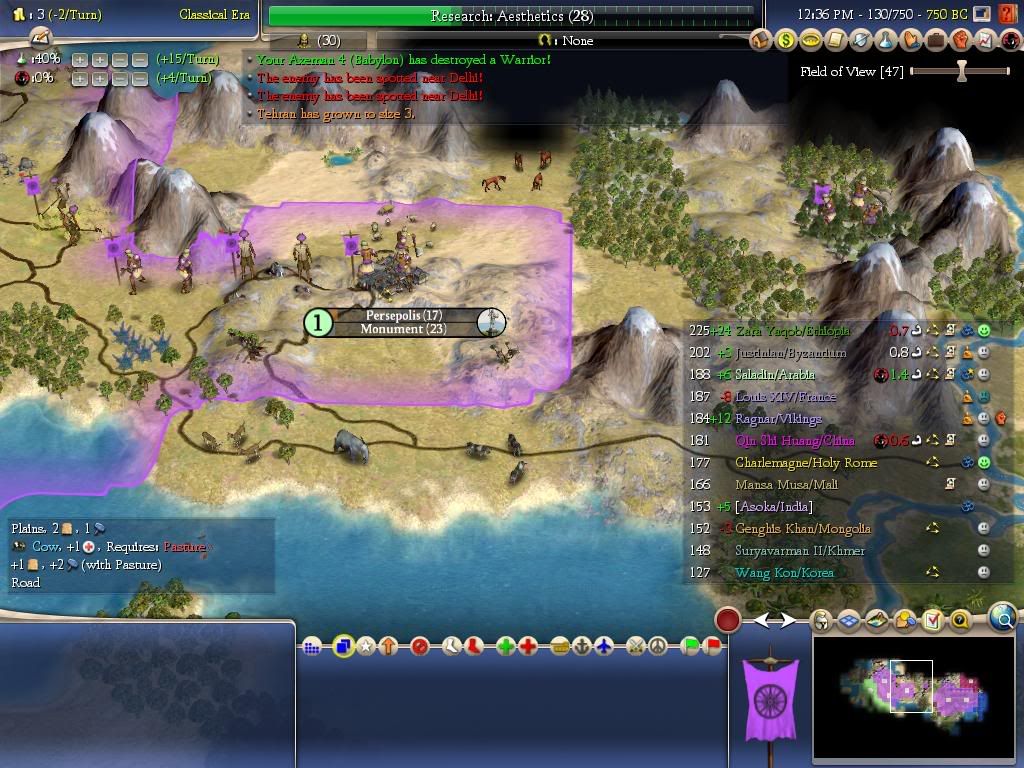
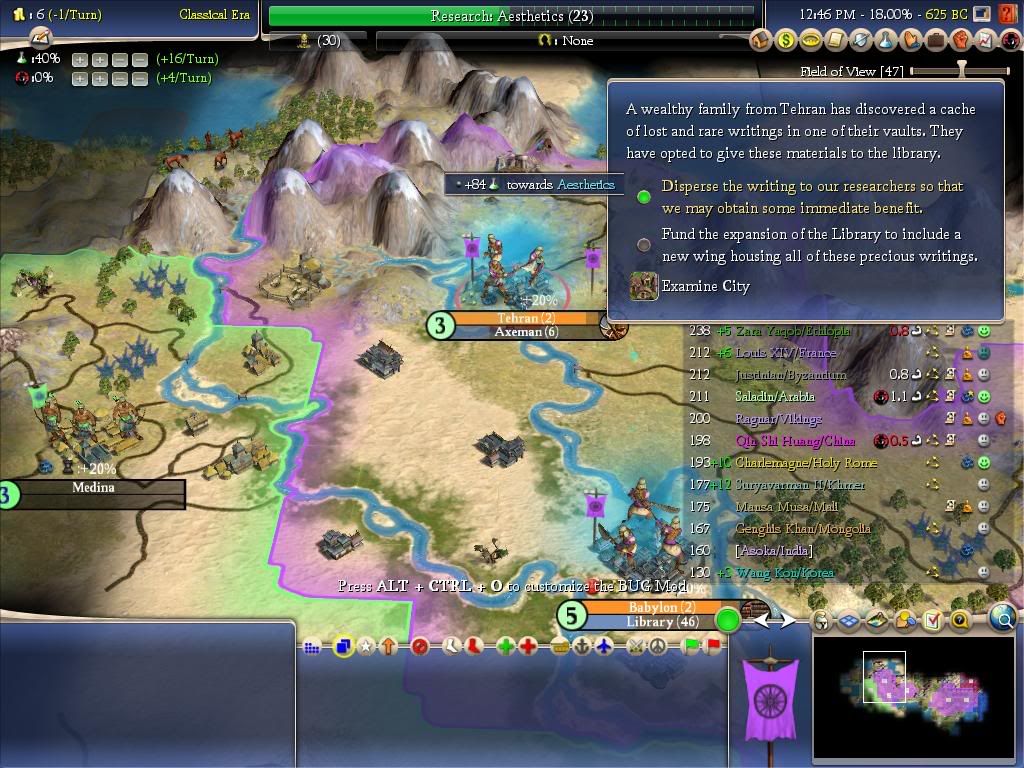


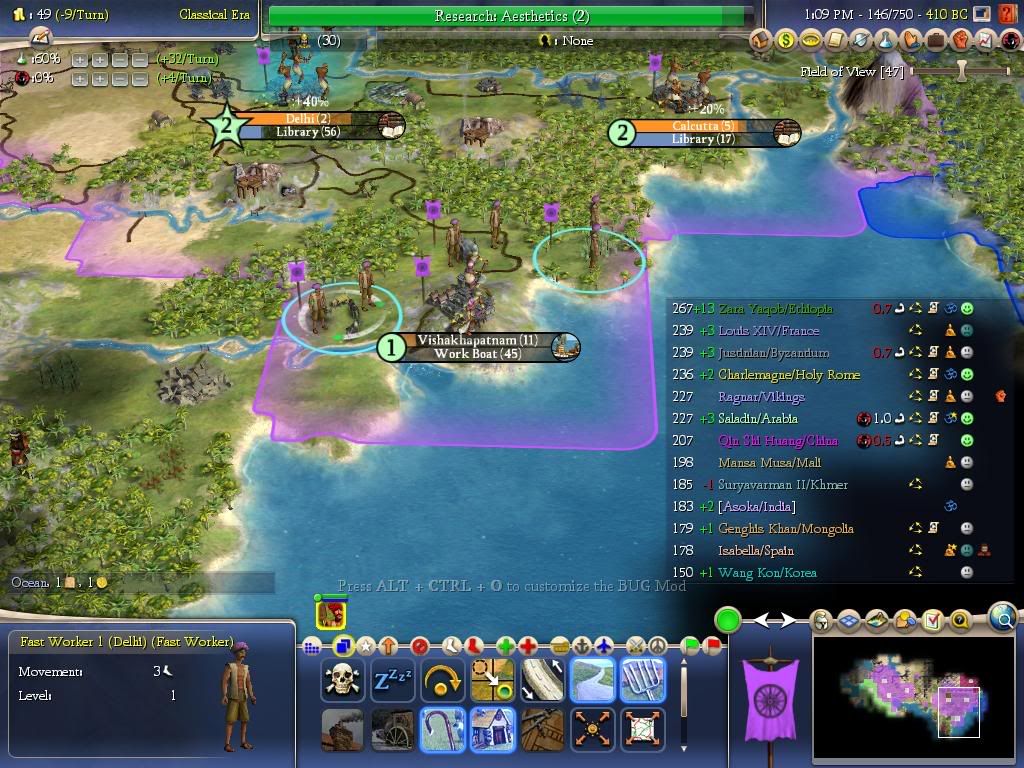

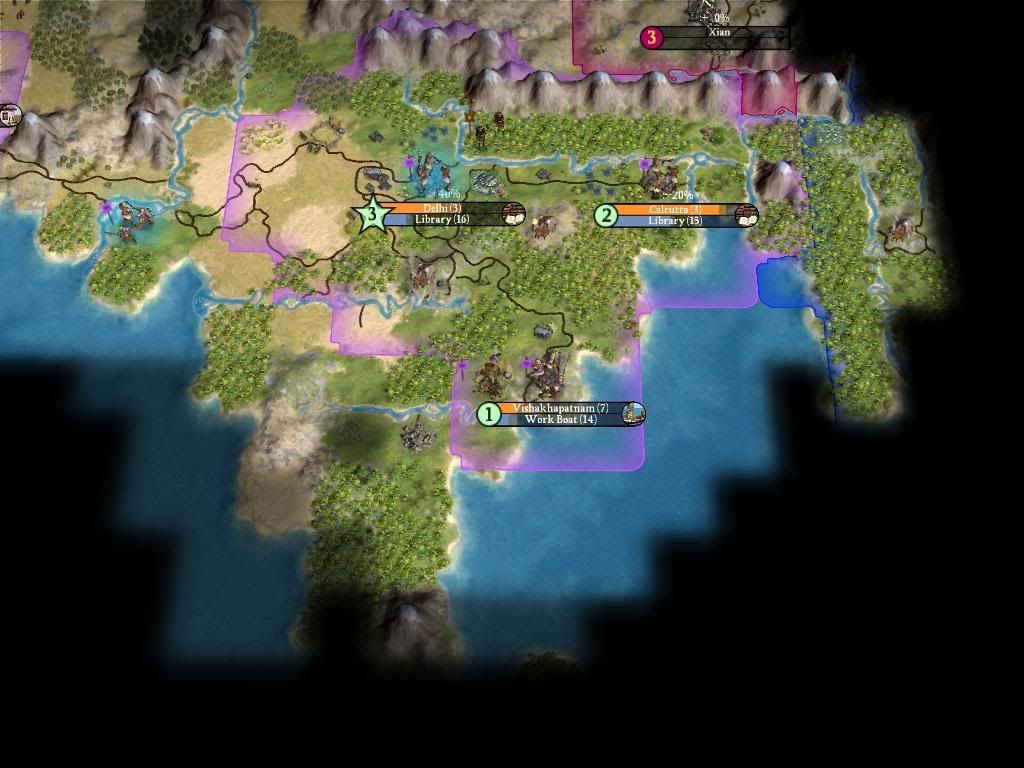
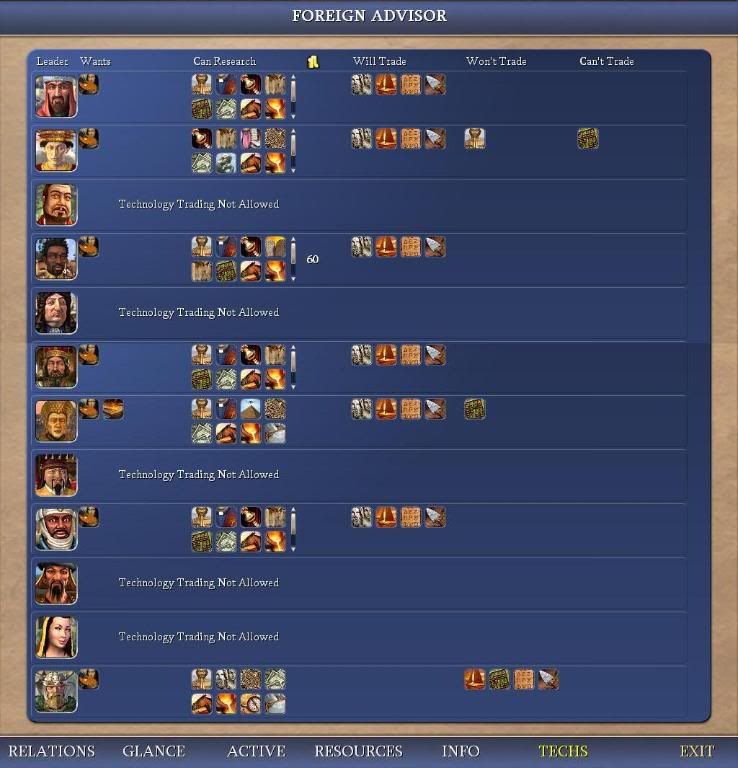
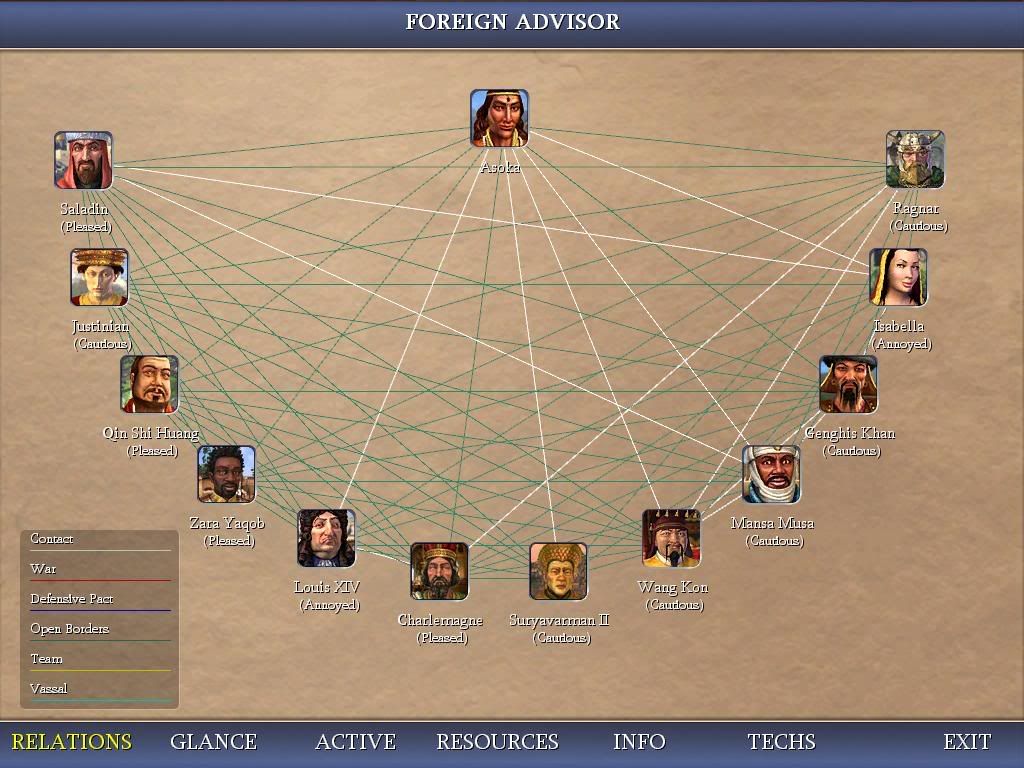
 , so it would probably be a safe trade to them. Qin will definitely try to build SoZ if he gets the chance.
, so it would probably be a safe trade to them. Qin will definitely try to build SoZ if he gets the chance.